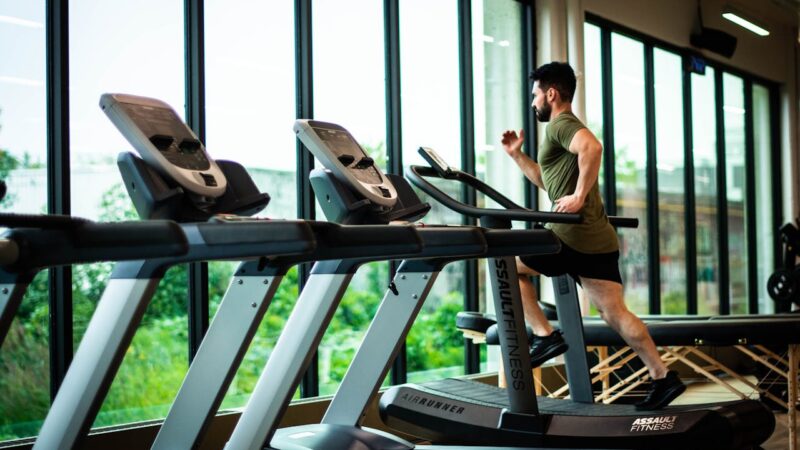Boost Your Fitness with This Easy Walking Hack

In our busy lives, finding time for dedicated exercise can often feel like an impossible task. However, a new study from the University of Massachusetts Amherst suggests that a simple tweak to the way we walk could significantly enhance our calorie-burning potential. This research offers an exciting possibility for those struggling to fit regular exercise into their schedules.
The Impact of Uneven Strides
The study, reported by the Daily Mail, reveals that incorporating uneven strides while walking can boost metabolism, leading to increased calorie burn. The researchers found that varying your walking pattern might be more effective in burning calories than maintaining a perfectly consistent stride.
Dr. Adam Grimmitt, the study’s lead author, explains, “I think it would be fair to assume that more frequent and larger variations in stride length would increase your metabolic rate while walking.” This simple adjustment could be a game-changer for people looking to improve their fitness without committing additional time to exercise.
The Study in Detail
Researchers led by Dr. Grimmitt investigated how stride variation impacts metabolism. They studied 18 healthy adults, each 24 years old and weighing an average of 155 pounds. Initially, participants walked on a treadmill for five minutes at their natural stride length.
Then, they were instructed to walk with strides that were 5% to 10% shorter or longer than their usual step. During this period, researchers measured carbon dioxide levels, an indicator of exercise intensity. The key finding was that even a small increase in stride variability (2.7%) resulted in a measurable boost to metabolism (1.7%).
“Step length variability plays a modest, albeit significant role in the metabolic cost of walking,” the researchers concluded. This finding highlights how slight changes in our walking habits can have a notable impact on calorie expenditure.
Practical Implications
This research offers practical implications for those with packed schedules. By simply incorporating uneven strides into daily walks, individuals can enhance their fitness efforts without needing extra time for exercise. This is particularly beneficial for people who find it challenging to carve out time for gym sessions or structured workouts.
Benefits for Older Adults
The potential benefits of uneven strides extend beyond just calorie burning. Researchers are also exploring how this information could aid older populations, focusing on energy conservation rather than solely on calorie expenditure. For seniors, varying stride lengths might help in maintaining mobility and reducing fatigue during walking.
“Future studies should quantify foot placement accuracy and muscle activity across similar virtual projections,” the researchers noted. This suggests a broader scope for future research, potentially leading to more refined recommendations for different age groups and fitness levels.
Verdict
The findings from the University of Massachusetts Amherst open up new possibilities for incorporating fitness into our daily lives. By making a simple change to our walking pattern, we can potentially increase our calorie burn and improve our overall health. This approach is accessible and easy to implement, making it an attractive option for anyone looking to boost their metabolism without investing extra time in exercise.
Incorporating uneven strides into your walks could be a small change with big benefits. Whether you’re a busy professional, a parent, or a senior looking to maintain your fitness, this simple adjustment could help you achieve your health goals more effectively. So next time you head out for a walk, remember that a little variability in your stride might be just what you need to enhance your fitness journey.
Q&A
Q1: What is the main finding of the study from the University of Massachusetts Amherst?
A1: The main finding of the study is that incorporating uneven strides while walking can significantly boost metabolism, leading to increased calorie burn. The researchers found that even a small increase in stride variability (2.7%) resulted in a measurable boost to metabolism (1.7%).
Also Read: How Can Non-Exercising Women Safeguard Their Health
Q2: How can varying your walking stride improve calorie burn?
A2: Varying your walking stride disrupts the efficiency of your usual walking pattern, making your body work harder to maintain balance and coordination. This increased effort raises your metabolic rate, which in turn leads to more calories being burned.
Q3: What specific stride variations were tested in the study?
A3: The study tested stride variations by having participants walk with strides that were 5% to 10% shorter or longer than their usual step. This variation was enough to significantly impact their metabolic rate.
Q4: Who can benefit from this new approach to walking?
A4: This approach can benefit anyone looking to improve their fitness with minimal time investment, especially those with busy schedules. It is also being explored for older adults, where the focus is on energy conservation rather than calorie burning.
Q5: How can someone incorporate uneven strides into their daily walking routine?
A5: To incorporate uneven strides, simply vary your step length periodically during your walk. For example, you could alternate between taking five longer steps and five shorter steps. The key is to introduce variability without making the walking pattern too complex or uncomfortable.
Q6: Are there any specific benefits for older adults?
A6: For older adults, incorporating uneven strides can help in maintaining mobility and reducing fatigue. It may also aid in energy conservation during walking, making daily activities less strenuous.
Q7: What other simple adjustments can enhance daily walking for better fitness?
A7: In addition to varying stride length, you can enhance your walking routine by changing your walking speed, incorporating inclines or stairs, and adding arm movements. All these changes can increase the intensity of your walk and help burn more calories.
Q8: Is this approach suitable for people with joint issues or other health concerns?
A8: While this approach can benefit many, individuals with joint issues or other health concerns should consult with a healthcare professional before making significant changes to their walking routine. Gentle variations and moderate changes are recommended to avoid any strain.
Q9: How does the study suggest measuring the effectiveness of stride variation?
A9: The study measured the effectiveness of stride variation by monitoring carbon dioxide levels, which serve as an indicator of exercise intensity. Increased CO2 levels correlate with higher metabolic activity and calorie burn.
Q10: What future research is planned in this area?
A10: Future research aims to quantify foot placement accuracy and muscle activity with stride variations. This will help in understanding the broader implications of stride variability on different populations, including its benefits for energy conservation in older adults.
Q11: Can this strategy be combined with other forms of exercise?
A11: Yes, incorporating uneven strides can complement other forms of exercise. It can be integrated into a broader fitness routine that includes activities like strength training, stretching, and aerobic exercises for a well-rounded approach to health and fitness.
Also Read: Hazards of Over-Exercising in Summer: A Comprehensive Guide
Q12: How often should someone vary their stride to see benefits?
A12: While the study doesn’t specify an exact frequency, regularly incorporating stride variations into daily walks can provide benefits. A good starting point could be varying strides for a few minutes at a time during each walk, gradually increasing the duration as it becomes more comfortable.











